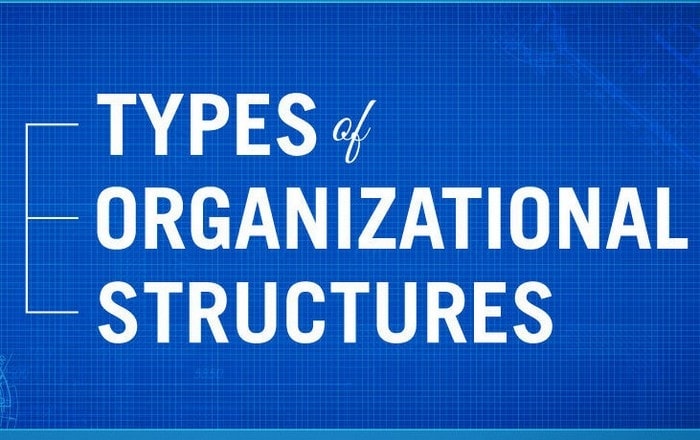
Exploring Organizational Structures: Types, Importance, and Elements

Organizational structure is the formal hierarchy that defines the roles, responsibilities, and relationships within an organization It is essential for proper coordination, increased efficiency, higher productivity, and job satisfaction Different types of structures include hierarchical, functional, horizontal, matrix, divisional, network, modular, and team-based Elements of organizational structure include company size, geography, product evolution, authority of distribution, the marketplace, and control
Organizational structure is the backbone of any organization, providing a clear hierarchy and framework for tasks to be allocated, supervised, and coordinated. Understanding this structure is crucial for new employees, as it enables them to navigate the chain of authority and follow proper procedures. Additionally, the structure determines how functions are divided and how Standard Operating Procedures are implemented. In emergency situations, knowledge of the organizational structure can be the difference between an effective response and chaos. These structures can take the form of workgroups, teams, departments, branches, and more.
Importance of Organizational Structure
1) Proper coordination
Effective work coordination and task management rely heavily on a well-defined organizational structure. It is essential for management to recognize this and integrate it into the company culture, as doing so can lead to increased productivity and efficiency among employees.
Proper coordination within a firm can have numerous benefits, including the quick attainment of both long term and short term objectives. When employees are able to work more efficiently and effectively towards shared goals, it has a positive cascading effect on overall productivity. This is why coordination is such a vital key to success for any organization.
2) Higher productivity levels of the employees
A well-defined organizational structure can significantly enhance a firm's productivity levels. When both the human resource department and top management understand its importance, employees become more aware of their roles and responsibilities, as outlined in their KRA's, resulting in a more efficient and effective work environment.
This leads to a decrease in issues such as insecurity, jealousy, and high turnover rates that can negatively impact the productivity of the company. To maintain a happy and satisfied workforce, it is essential for the company to provide a positive work environment, challenging roles, and appropriate rewards to motivate employees. All of this can be achieved by implementing an effective organizational structure, which is crucial for success.
3) Increased efficiency
When employees are motivated, agile, and productive, their work efficiency improves. This is because they are driven to fulfill their duties and responsibilities with passion and dedication, ultimately leading to the growth and success of the company. That's why industry experts, veterans, and HR professionals emphasize the importance of organizational structure. With higher efficiency levels, a company can establish a strong brand presence in the market and outpace its competitors in a shorter timeframe.
4) Retain and attract expert and experienced employees
To establish a positive and healthy reputation among job seekers, firms must prioritize understanding and implementing effective organizational structures. Job applicants are meticulous in researching a company's work culture, environment, and organizational structure before applying. They gather information from industry peers, online forums, and websites to determine if the company aligns with their expectations. If the applicant is content with the structure and their role and responsibilities within the firm, they are more likely to accept the job offer. Additionally, a satisfied employee who feels valued by their employer is more likely to remain with the company for the long term.
5) Proper flow of communication
Miscommunication can have far-reaching negative consequences on an organization's workflow and reputation. Not only does it disrupt the department where it originates, but it also impacts the functioning of other interdependent departments and their employees. Therefore, it is essential for organizations to address and resolve issues of miscommunication promptly.
A crucial factor contributing to this problem is the absence of a well-defined organizational structure, including clear hierarchy levels and defined roles, responsibilities, and duties for each employee. This lack of structure hinders effective communication and creates obstacles to the smooth flow of information within the company. Therefore, it is essential for the firm, regardless of its size, employee strength, or market share, to prioritize the establishment and maintenance of a strong organizational structure.
6) Job satisfaction
The job satisfaction of employees in a firm is not solely reliant on their pay, rewards, and performance evaluations. The structure and hierarchy levels play a significant role in fostering high levels of motivation, healthy competition, challenging tasks and responsibilities, and a positive work culture and environment. When employees are happy and content in their roles, they are more likely to remain with the company for an extended period of time.
7) No duplication of work:
A clear and well-defined organizational structure is crucial for any business to function efficiently. When a company ensures that its organizational structure is implemented consistently across all operations, employees are able to better understand their roles, duties, and responsibilities. This helps to avoid duplication of work and ensures that tasks are completed by the appropriate employee. On the other hand, a lack of proper organizational structure and hierarchy can lead to confusion among employees and result in multiple employees working on the same task.
A disorganized work environment can lead to internal conflicts, lower productivity, and decreased efficiency. Therefore, it is crucial for top management and the human resource department to establish a proper organizational structure to create a healthier and less competitive atmosphere in the workplace.
8) Specialization of the tasks and responsibilities
When an organization recognizes and prioritizes the significance of its structure, it can assign specific roles to its employees based on their professional qualifications, experience, expertise, and knowledge. This approach allows the organization to make the best use of its employees' skills and knowledge, resulting in a workforce that is highly fulfilled and satisfied. Additionally, assigning tasks within their domain of expertise enables employees to learn and develop in the most effective way possible. By demonstrating their capabilities within the organization, employees are able to earn recognition and praise from their supervisors and higher-ups.
9) The distinctiveness of power and authority
Following a clear organizational structure is crucial to ensure a clear distinction of power and authority within a company. For example, the marketing department is led by the CMO, followed by the Head of Marketing, Marketing Manager, Marketing Executives, and Marketing Management Trainees.
Each of them is aware of their roles, powers, duties, responsibilities, and reporting authority without any sort of confusion and issues.
Different Types of organizational structures
Creating a well-defined and unique organizational structure is crucial for achieving an efficient and professional work environment, regardless of the size of your business. A well-prepared configuration can facilitate smooth and effective workflow, leading to increased productivity and success.
Different organizational structures can be adapted or modified to meet your needs. To effectively implement a structure, it's essential to determine which one is most suitable. Here are some of the most widely used and well-known organizational structures for your reference.
#1 Hierarchical Structure
These entities commonly utilize a hierarchical structure, which involves multiple levels of authority and management to oversee employees. This organizational structure is widely adopted and utilizes a vertical command system to effectively assign duties and responsibilities.
The categorization of staff is determined by multiple criteria, such as their geographic location. In the case of a global organization, it may choose to group employees based on their country of origin. Alternatively, employees may be grouped according to the shared services they provide.
#2 Functional Organizational Structure
The Functional organizational structure is a practical choice for those seeking a standardized approach to departmentalizing based on job criteria and functions. This structure is ideal for departments such as finance, marketing, accounting, and human resources that require specialized attention.
By utilizing this structure, you have the ability to group employees based on their roles, such as creating a team for salespeople or those handling purchasing. Each department will have its own manager who will report to the head of all the functional divisions.
He, in turn, will have to report directly to the company head or a specific director who has undertaken the responsibility of handling operational areas.
#3 Horizontal Structure
If you are looking for an apt and common organizational structure for a small business entity or a new start-up, then you should certainly opt for Horizontal Structure.
With a smaller company, there is less need for multiple levels of middle management. This allows for well-trained employees to have more autonomy and make decisions efficiently for the benefit of the company. While there are still superiors, direct involvement fosters a sense of shared responsibility and transparency within the organization.
#4 Matrix Structure
The Matrix structure is an effective organizational system for those seeking a standard structure. This system groups workers with similar skills together to accomplish a particular task.
In a Matrix structure, employees are required to follow both vertical and horizontal reporting levels. This means that an employee may report to their team manager while also being a member of another group and reporting to the head of that group. The reporting relationship is set up as a matrix, hence the name.
By implementing a matrix organizational structure, employees are immediately aware of their dual responsibilities to both their department and organizational projects. This allows them to prioritize their tasks and work efficiently. Additionally, the twin command chain offers a balanced approach and increased flexibility, while also promoting the sharing of resources and open communication.
Matrix organizational structure can be a double-edged sword as it comes with a potential drawback of creating confusion due to its complex layers. This can be particularly challenging during stressful times, leaving the crucial question of accountability unanswered.
#5 Divisional Structure
The Divisional Structure is a popular choice for organizations looking for a cohesive and manageable structure. With this approach, entities are divided into divisions based on market, products, or geographic location, each with the necessary resources to function effectively. In the case of a parent company with multiple subsidiaries under its brand, a multi-divisional structure may be more suitable. There are various types of divisional structures available to choose from.
Product-based divisional structure
If your company is dealing in multiple products, then the best common organizational structure for the entity is product-based divisional structure.
The organization is structured with specialized divisions that handle specific product lines, each reporting to their respective executive. This allows for a thorough and efficient approach to each product, ensuring attention to detail and optimal results. Additionally, the sales and marketing teams are integrated within each division.
An important advantage of Divisional Structure is that the failure of one entity does not threaten other subsidiaries as the operational working is independent.
Market-based divisional structure
The market-based divisional structure organizes divisions according to customer, industry, and market, making it ideal for businesses that offer specialized products and services. With a tailored approach, companies can effectively meet the unique expectations of their customers. Additionally, this structure enables companies to stay attuned to shifts in demand, allowing them to respond quickly and effectively.
In such cases, a geographical divisional structure can be implemented to ensure effective management and coordination of operations across different locations.
Companies that require proximity to a specific location, either due to the source of supply or suitability of their products for customers in that area, benefit from implementing a geographical divisional structure. This structure is typically organized by districts, states, or regions, with employees reporting to a central authority.
#6 Network Structure
The Network Structure is a popular organizational framework that promotes flexibility and decentralization to effectively oversee both internal and external relationships between top executives and managers. This structure encourages open communication and enables independent decision-making, making it a highly agile and responsive system.
#7 Modular structure
The Modular Structure is a widely used organization structure that allows for the creation of strategic units. These units are focused on specific areas and departments, which can be outsourced to provide additional benefits for the company. By implementing this structure, companies can improve their efficiency and effectiveness while also reducing costs.
It is crucial to separate the department without negatively impacting the rest of the organization. This approach allows for greater flexibility and the ability to seek external assistance when necessary. For example, if your company excels in manufacturing but struggles with marketing, partnering with an outside business can boost brand recognition.
#8 Team-Based Organizational Structure
The team-based organizational structure is a highly adaptable and widely used organizational model that promotes effective collaboration, quick decision-making, and efficient problem-solving among team members within a company.
Individual workers within a team work diligently towards a common goal, with each member contributing their unique set of skills. Once the project is completed, the team disbands and a new one is formed for the next project. The team-based organizational structure has become increasingly popular in recent times due to its ability to enhance work efficiency and productivity within an organization.
Here is a video by Marketing91 on Organizational Structure.
Elements of Organization Structures :
The elements of organizational structure help management in effecting change for the achievement of organizational goals. The six elements include;
1) Company size and number of employees
As a company grows and hires more employees, the management structure naturally develops more tiers. This is done to ensure efficient and effective operations within the organization. It's important for the structure to be flexible enough to accommodate future growth, including the potential need for additional managers.
Structures that facilitate growth are crucial for any company's success. Such structures enable the organization to make necessary adjustments to salary scales and job descriptions without causing any significant disruptions to day-to-day operations.
2) Geography
Organizations with multiple locations require a well-planned organizational structure that allows for efficiency and autonomy at each location. However, the challenge lies in maintaining effective communication among managers and their superiors in different locations. To ensure proper guidance and instructions are obtained, clear communication channels must be established.
3) Product Evolution
In the initial stages of a company's journey, the focus is often on creating a single product that can meet the needs of the entire industry. However, as the company expands and diversifies, new departments are established to cater to additional products, resulting in changes to the organizational structure and product development.
4) Authority of Distribution
Recent research has shown that an organization's structure can be impacted by the type of authority it employs. Two main types of authority include centralized and decentralized management. Decentralized management empowers lower-level managers to participate in decision-making processes, while centralized management reserves these responsibilities for specific executives.
5) The marketplace
To ensure success, the structure of a company must be tailored to its target market and location. Manufacturing companies, for example, may choose to distribute their products through wholesalers or sell directly to consumers. To accomplish this, the company must maintain separate teams for marketing and sales, and ensure that each aspect of their business is properly organized.
6) Control
According to many management experts, companies that produce high-quality products often have more stringent regulations and operate in a highly structured environment. This is particularly true for businesses that manufacture advanced technology products, medical equipment, and certain types of handcrafted goods.
Those companies in mass production may not have much control over product quality and will, therefore, have a different organizational structure.
Having a well-structured organization with clearly defined roles for employees and a streamlined decision-making process is crucial for ensuring not only efficiency but also profitability. Therefore, it is important for organizations to embrace this idea and implement it effectively.





















